At Beecroft Garden, the arts play a central role in our curriculum. Pupils benefit from expert visual arts teaching led by a specialist, while class teachers receive professional development by observing and participating in lessons. This collaborative model strengthens practice and deepens the school’s commitment to creativity.
Take One Picture is a much-loved tradition at the heart of our community. Each year, the whole school takes inspiration from a National Gallery painting, using it as the foundation for a week-long event culminating in a dynamic exhibition. Here the school hall is transformed into a gallery celebrating the creative achievements of every child, showcasing not only the final pieces but also the entire artistic journey, helping pupils see themselves as real artists and thinkers.
Our intention is to create an art and design experience that is both inclusive and enriching, one that connects children not only to historic artworks but also to contemporary ideas and global perspectives. We design the Take One Picture project to bring a single artwork to life across all year groups, using it as a springboard for creativity, imagination, and meaningful artistic exploration. To make these connections relevant and engaging, we introduce children to a range of diverse, contemporary artists whose work speaks to these ideas. This helps ensure that the project not only builds on the artistic skills developed throughout the year but also deepens children’s understanding of art and design as a tool for communication and social commentary.
In 2024–25, the chosen painting was A Regatta on the Grand Canal by Canaletto. As always, children developed artistic techniques, but this year greater emphasis was placed on themes of identity, culture, and global awareness. This allowed them to extend and to refine technical abilities while connecting personal experiences and perspectives to their work, making the process more meaningful.
As the art and design specialist educator, my role is to consider themes and approaches that resonate with our students while aligning with our mission of developing global citizens. I begin with online training from the National Gallery, which introduces the chosen paintingPainting is the practice of applying paint or other media to a surface, usually with a brush. An art object made using paint (noun). and explores its historical, artistic, and cultural significance. I then reflect on how the artwork can act as a springboard to explore themes such as identity, cultureThe behaviours, beliefs and activities of a social, geographical, age defined or ethnic group of people, to include their artistic and creative pursuits, sustainability, and global awareness, ensuring the project connects to art historyArt History is the study of art works from an historical viewpoint. It usually involves looking at the various contexts in which art works were... while speaking meaningfully to the world our children are growing up in.
Following this training, I led professional developmentProfessional development is improving yourself through learning and training to advance your career. All organiations may offer training sessions to further teach their employees, but an... for staff around Canaletto’s A Regatta on the Grand Canal. These sessions provided historical context and fresh insight into contemporary practices exploring identity, cultureThe behaviours, beliefs and activities of a social, geographical, age defined or ethnic group of people, to include their artistic and creative pursuits, and global issues such as over-tourism and climate change. This shared foundation enabled staff to plan with purpose and confidence, ensuring the project was both artistically rich and culturally relevant and thought-provoking.
Collaborative planning sessions helped staff design creativeBeing creative or 'creativity' relates to or involves the use of the imagination or original ideas to create something. learning experiences tailored to our children’s lived experiences and cultural backgrounds. The goal was to create outcomes that felt personal, relevant, and rooted in meaningful exploration. Learning environments and high-quality resources were carefully curated to spark inquiry and stimulate dialogue. Lessons promoted critical thinkingThe ability to reason, ask questions, debate and challenge what is presented to you. through reflective discussions, encouraging children to evaluate their own work and that of their peers. Pupils developed visual literacyVisual literacy is the ability to interpret, negotiate, and make meaning from information presented in the form of an image, extending the meaning of literacy,..., used art-specific vocabulary with confidence, and refined their work in response to feedback. Considering the techniquesA procedure, formula or routine by which an outcome or artwork is achieved, to include weaving thread into cloth with a darning needle, carving wood... and intentions of established artistsPeople who are engaged in a broad spectrum of visually led ideas and activities aligned to the expressive arts alongside their own choices encouraged creativeBeing creative or 'creativity' relates to or involves the use of the imagination or original ideas to create something. risk-taking and ownership, leading to purposeful outcomes.
All artwork was curated with care, ensuring every piece contributed to a powerful and cohesive final exhibition. To further cement children’s understanding of the artistic processA series of actions, changes or operations performed in the making or creating of a product or outcomes. The procedures that one goes through in... and their role as artistsPeople who are engaged in a broad spectrum of visually led ideas and activities aligned to the expressive arts, artArt refers to a diverse range of human intellectual and expressive activities and the outcomes of those activities. Within this context art is further defined... ambassadors (aged 10-11) received training on the featured artists and artworks, enabling them to lead aspects of the exhibition launch and share the significance of the project with our wider school community.
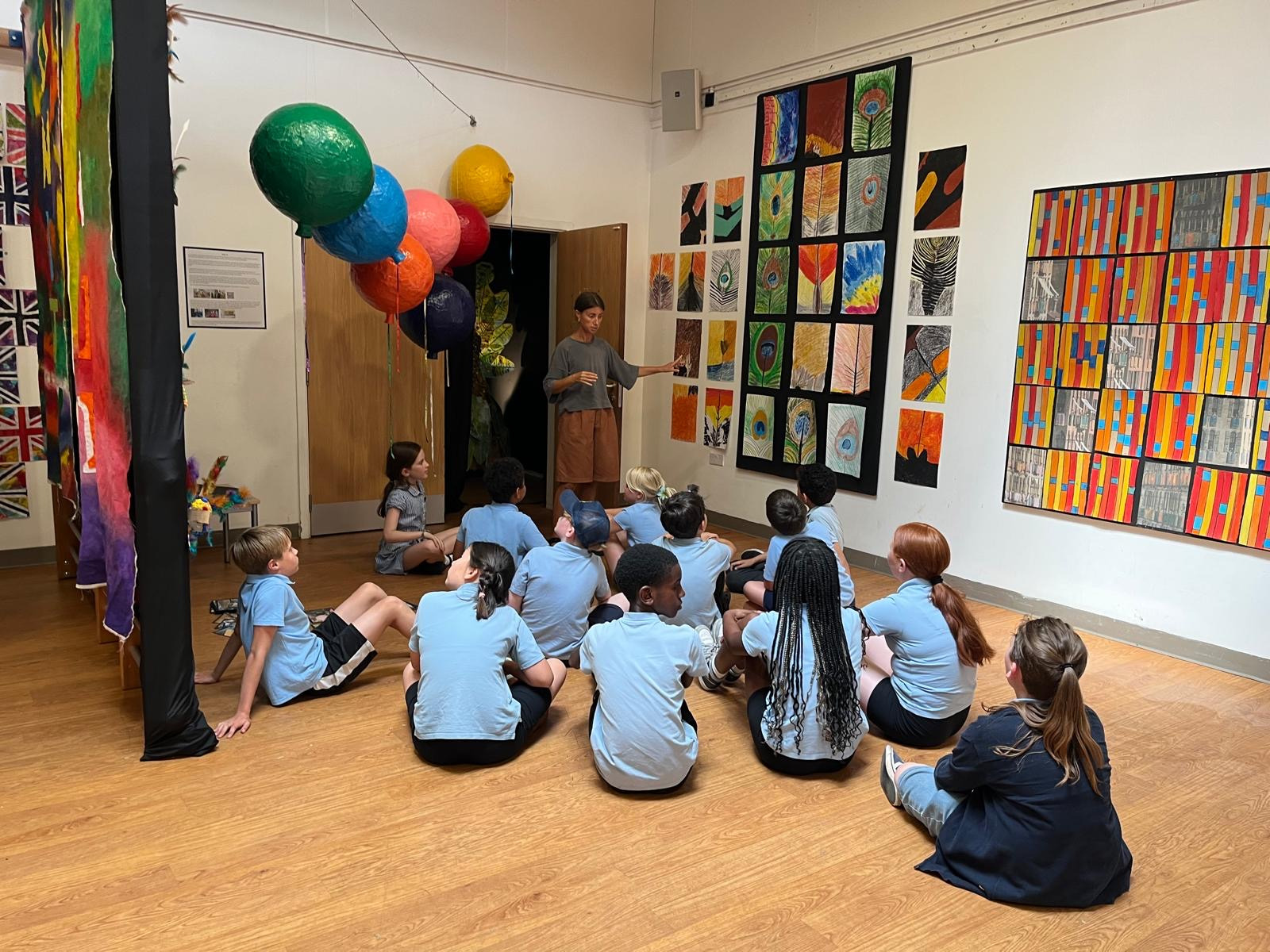
This year’s Take One Picture exhibition met our aims of celebrating identity and encouraging thoughtful engagement with global issues, with final works reflecting the diverse voices, cultures, and experiences of our school community.
Cultural heritage was explored across age groups in a variety of meaningful ways. Our youngest students (aged 4–5) created vibrant carnival masks and portraits inspired by Hassan Hajjaj, celebrating individuality and joyful self-expression. Students aged 8-9 began by delving into the Carriacou Regatta, the Caribbean’s longest-running regatta, which led them to explore the roots of Notting Hill Carnival. They learned about its origins as a response to racial injustice and its role as a powerful symbolAn image which represents something. It can be a traffic sign (such as a train to warn of a level crossing), or it can be... of Caribbean resilienceIn art, resilience is the capacity of the work of art to preserve through aesthetics its particularity distinguishing it from any other object, despite the increasing subjectivization in the.... Inspired by Hew Locke’s The Procession, the students collaborated to create a striking Carnival Queen sculptureSculpture is three-dimensional art made by one of four basic processes: carving, modelling, casting, constructing. The term installation art is used to describe large-scale, mixed-media..., with each child contributing a handmade feather to represent strength, unity, and community.
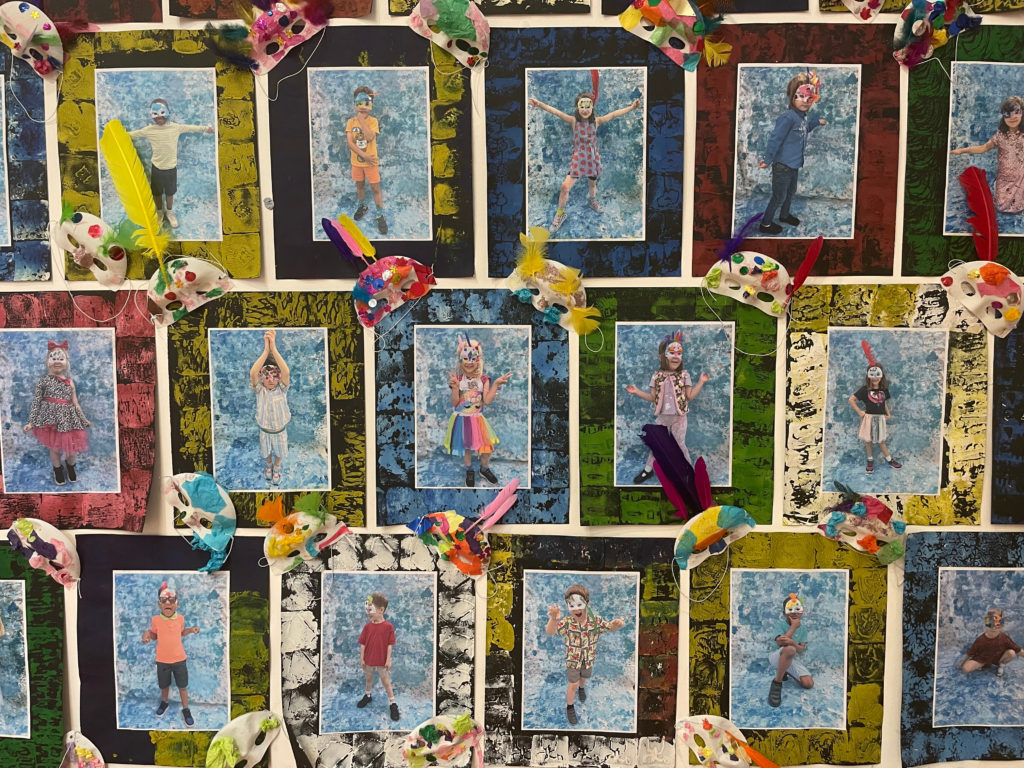
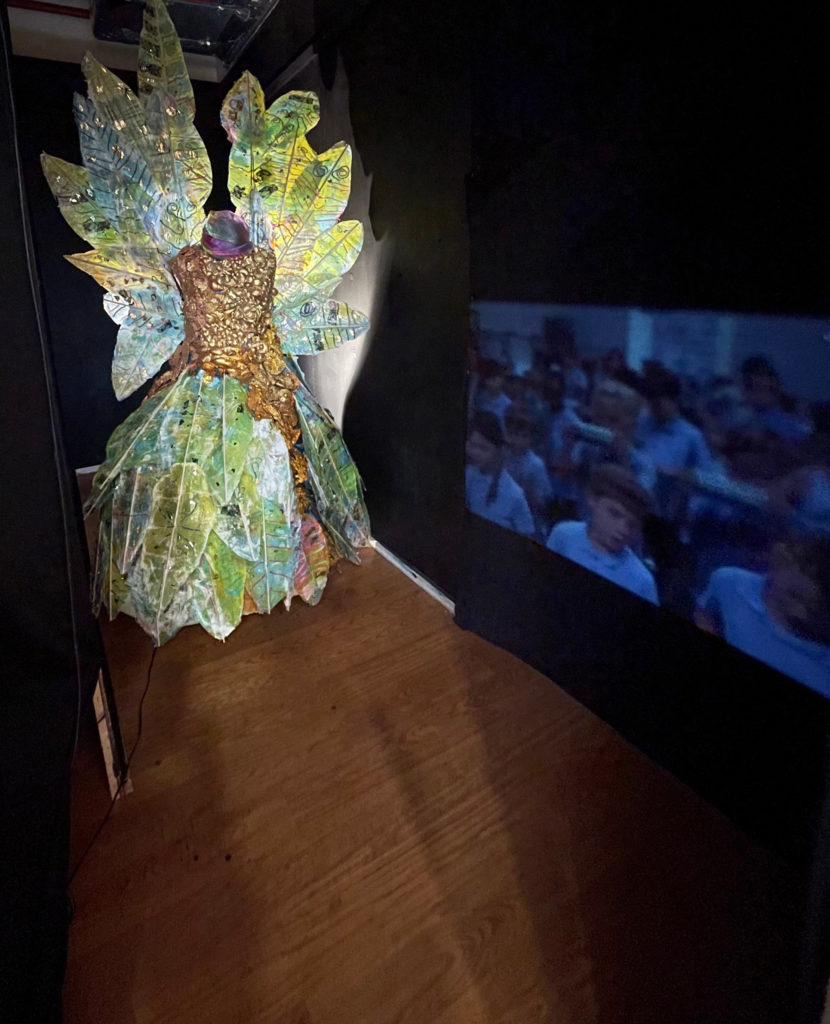
Continuing these themes, students (aged 9–10) reimagined the Union Jack, challenging its traditional and far-right associations. Inspired by Faith Ringgold and Adham Faramawy, they created collaged flags and inclusive banners celebrating identity, diversity, and unity. Students (aged 10–11) explored tourism through the lens of Joiri Minaya, producing agamographs and a collaborative poem, The Tale of Tourism, highlighting tensions between cultural appreciation and environmental degradation.
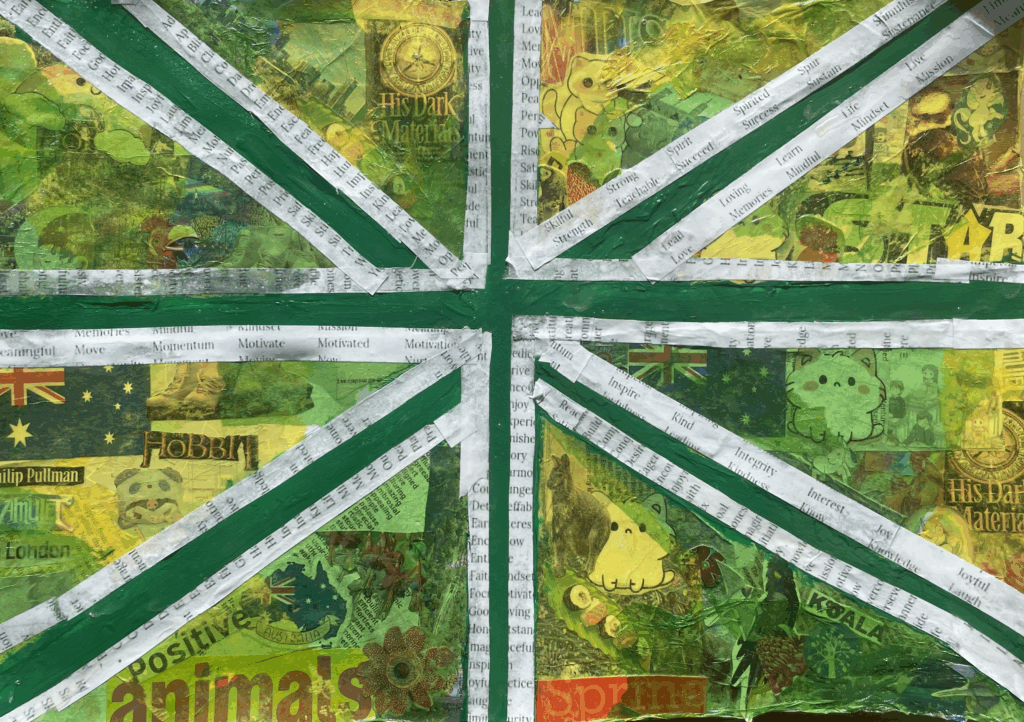
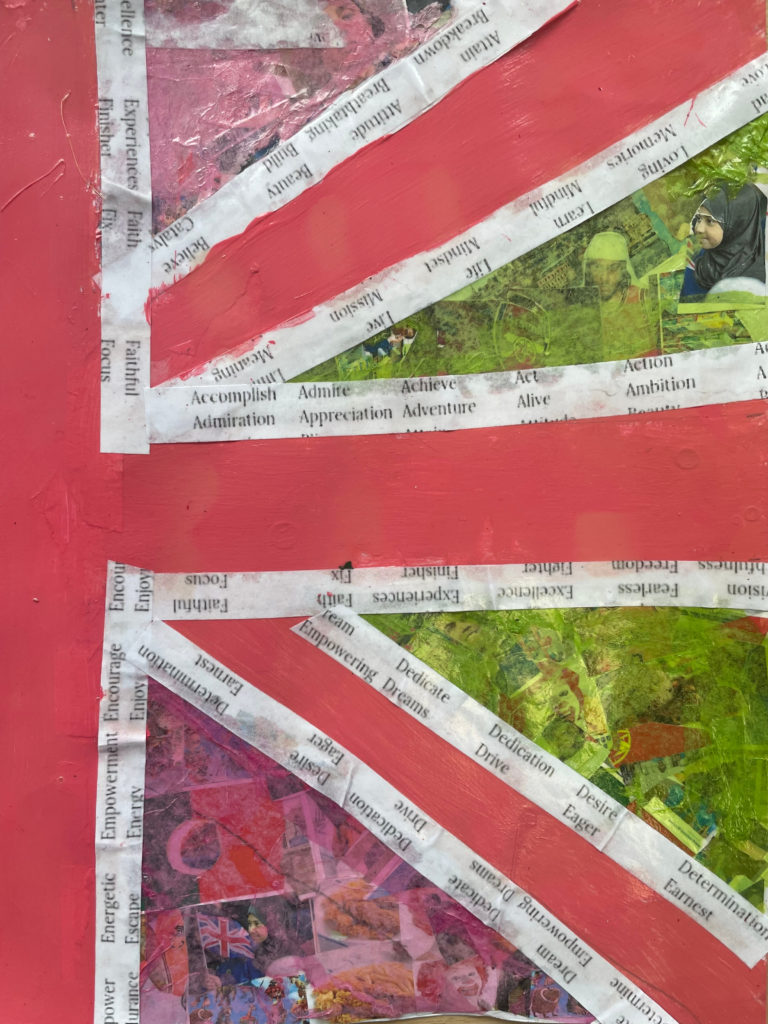
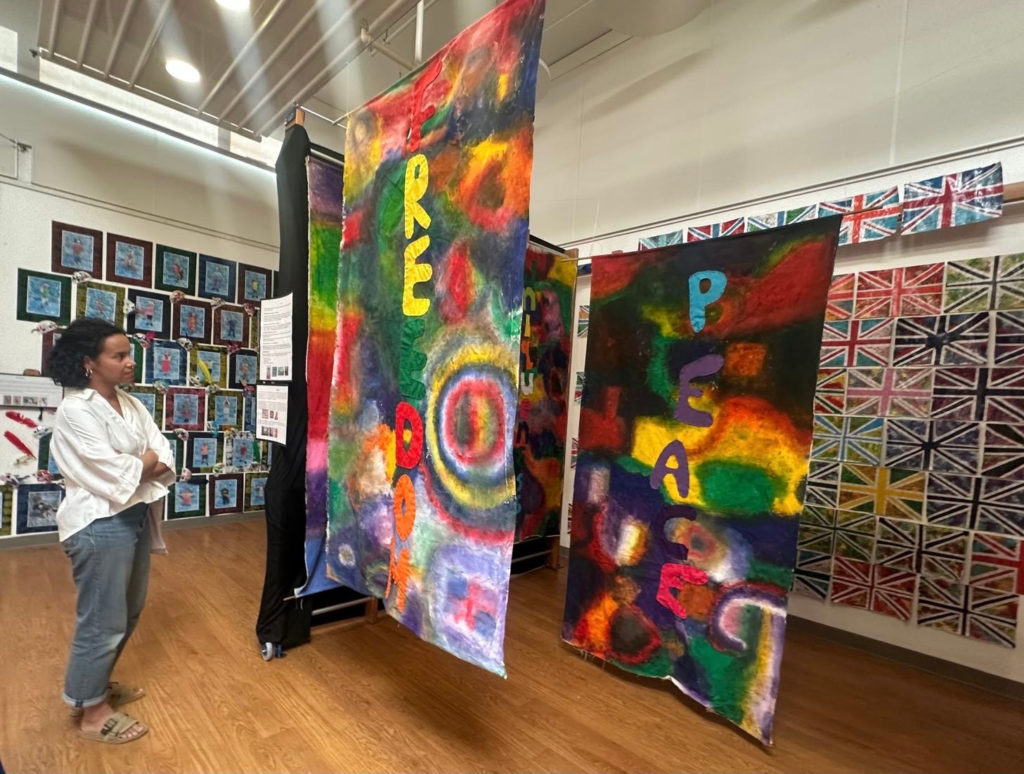
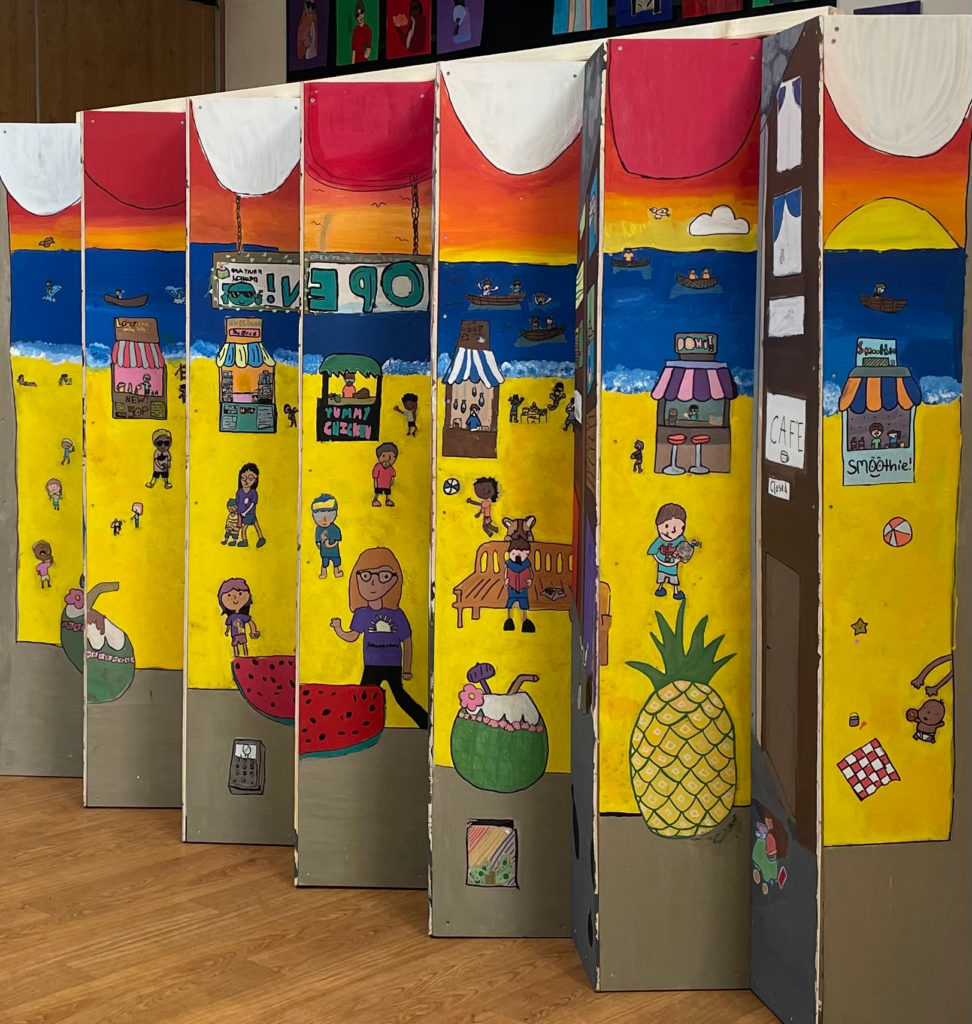
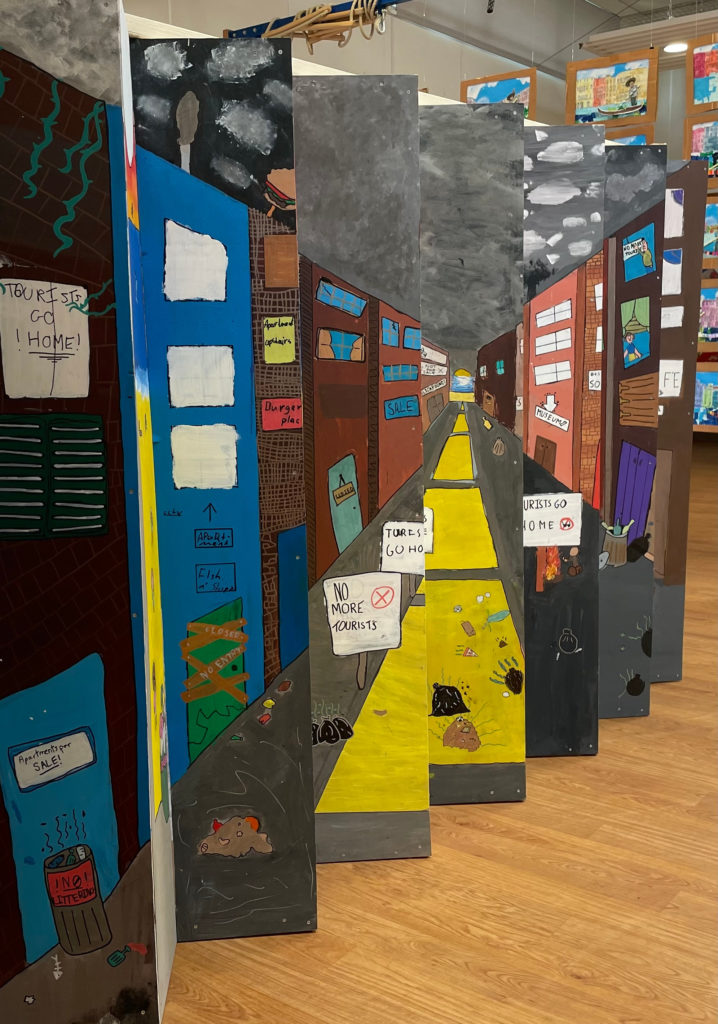
Environmental issues were also key. Students (aged 5–6) created a gondola sculpture from unwanted toys, promoting sustainability. Meanwhile, students (aged 9–10) crafted oversized food sculptures influenced by Nicola Dyer, critiquing overconsumption and waste. This focus on sustainability continued in the afterschool club, where students repurposed materialsThe resources that artists, craftspeople and designers use to create work, to include thread, plastic, stone, wood, clay, paint and paper such as old string, scrap paper, and leftover acrylic paintA coloured substance that can be thickened or thinned and spread over surfaces. Paint can be water soluble, oil or plastic based, and have opaque... from nearly empty bottles.
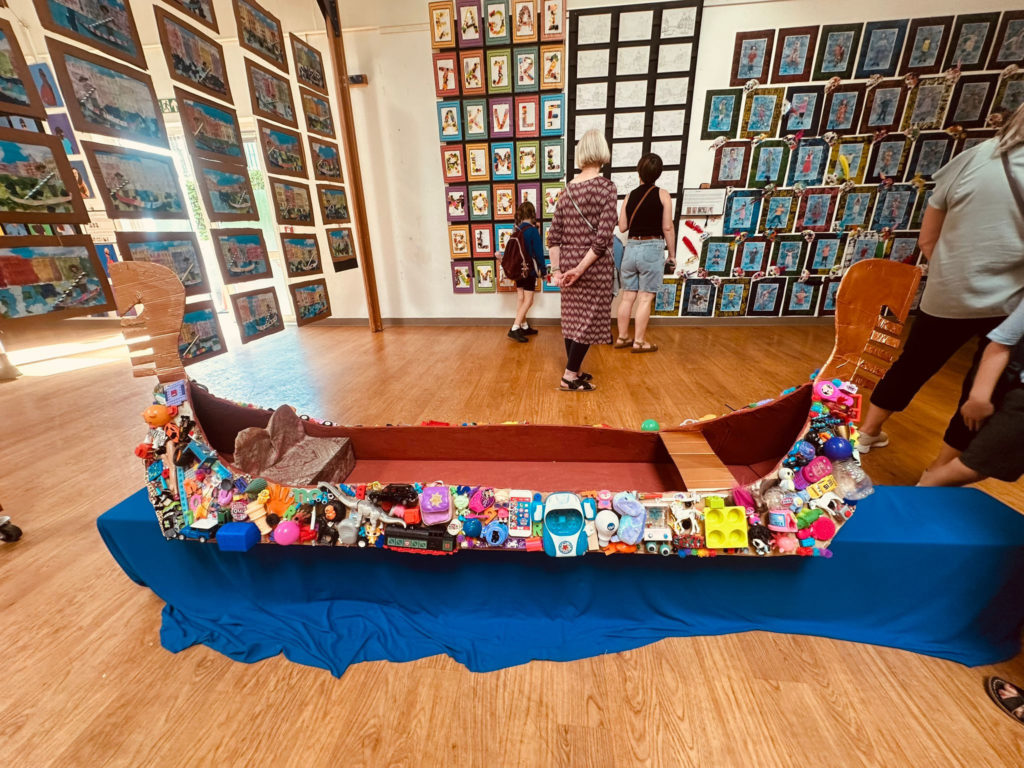
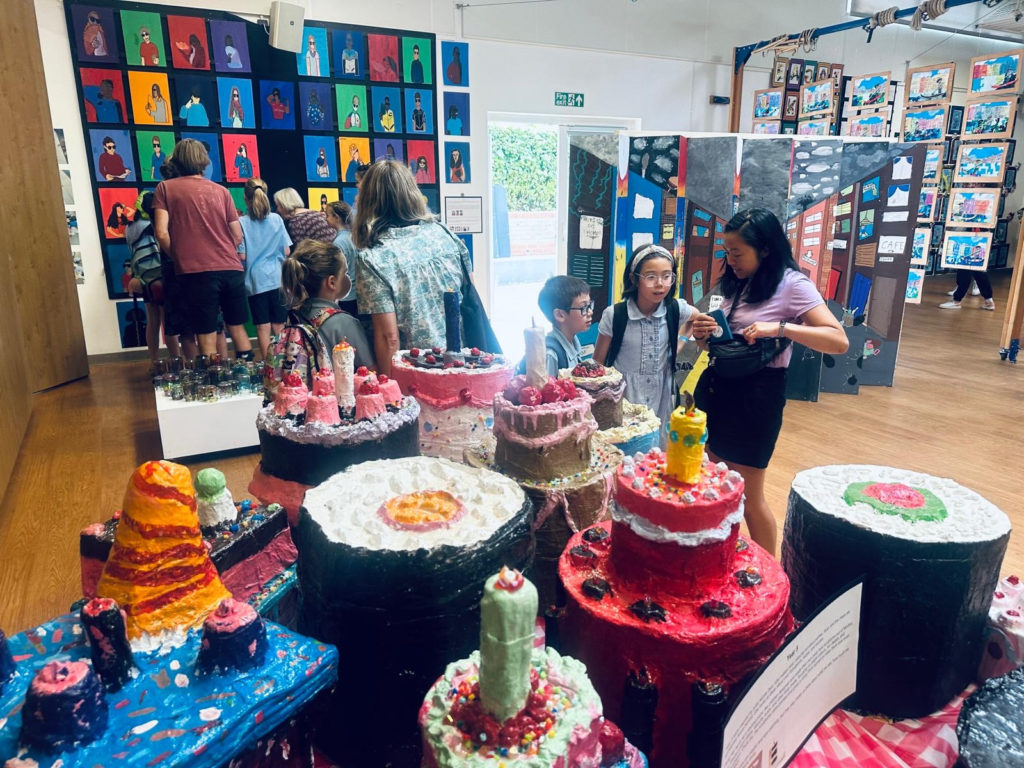
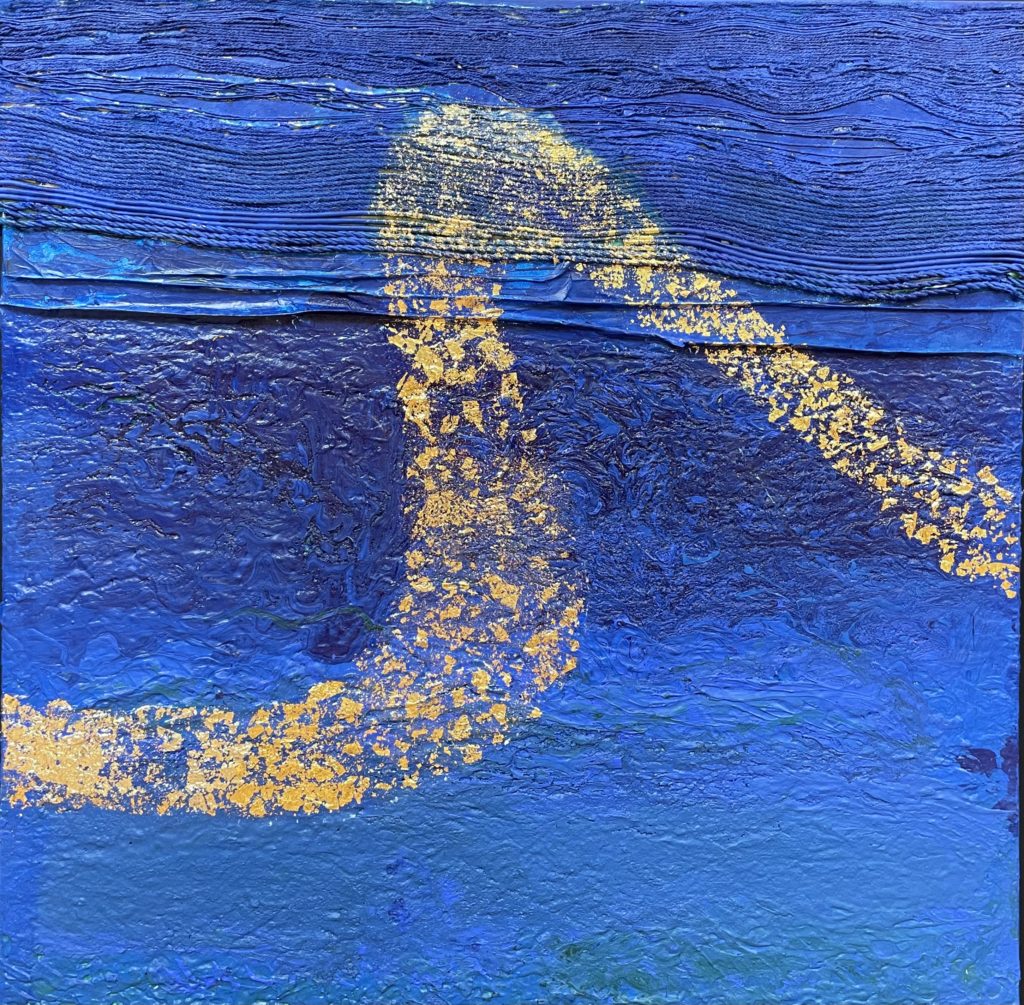
Our art ambassadors represented Beecroft with maturity and pride, articulating the artistic processA series of actions, changes or operations performed in the making or creating of a product or outcomes. The procedures that one goes through in... and meaning behind the work. Across the school, children gained a rich understanding of art and designDesign shapes ideas to become practical solutions and propositions for customers and users. Design is all around us, everything man made has been designed. The... as storytelling, activism, and celebration. The exhibition showcased not just artistic skill but also the children’s growing awareness of themselves and the world around them.